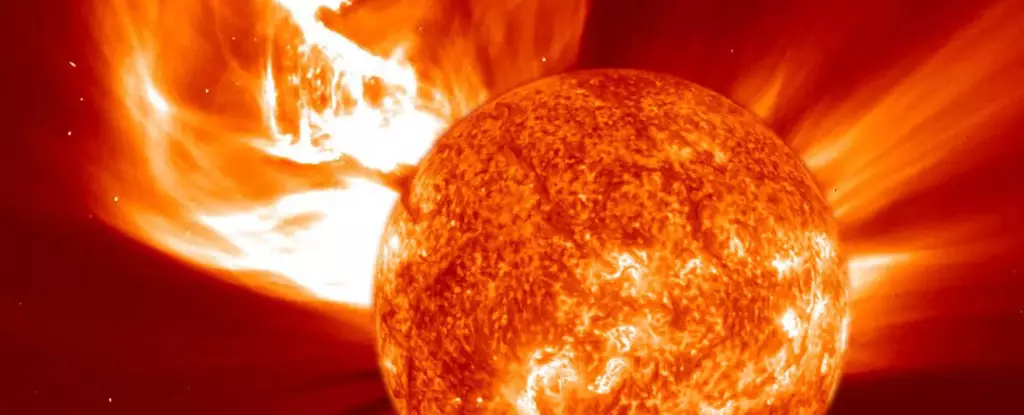In the vast reaches of space, where human technology strives to explore and understand the cosmos, the delicate balance between satellite design and environmental conditions can lead to unforeseen challenges. The recent demise of three miniature satellites from Curtin University’s Binar Space Program serves as a multifaceted case study on how intensifying solar activity can disrupt even the most carefully planned space missions. What was meant to be an extended period of scientific exploration turned into an unintended lesson about the dynamic forces of our Sun.
The Binar Space Program aims to democratize access to space research by developing CubeSats—small, standardized satellites that can be deployed for various scientific purposes. The program’s first successful mission, Binar-1, launched in September 2021, showcased impressive endurance by remaining in orbit for nearly an entire year. Its follow-ups, Binar-2, Binar-3, and Binar-4, however, were anticipated to last six months. Instead, they succumbed to the atmospheric forces fueled by heightened solar activity just two months after deployment, heavily underlining the unpredictable nature of space missions.
Solar activity, defined by phenomena such as sunspots, solar flares, and solar wind, profoundly affects space operations. The Sun undergoes an 11-year cycle, fluctuating between high and low solar activity. During these peak periods, the Sun’s magnetic field intensifies, leading to an increase in charged particles that can interfere with satellite operations. When small CubeSats like those from Binar enter low Earth orbit—defined as being within 2,000 km of the surface—they become particularly vulnerable to such external forces.
The significant uptick in solar activity observed recently resulted in the Earth’s atmosphere expanding, which increased drag on low-altitude satellites. Unlike larger satellites equipped with thrusters, the Binar CubeSats lacked the necessary technology to adjust their altitudes or mitigate orbital decay caused by this additional drag. Consequently, their missions were tragically cut short, exemplifying how solar behavior can drastically affect satellite longevity.
Beyond the immediate issues faced by the Binar satellites, increased solar activity poses broader challenges for satellite technology and space navigation. Charging of the satellite’s electrical components can lead to system failures, while radiation exposure can present risks to astronauts in space or pilots flying at high altitudes. The impacts on longer-range radio communications are additional complications that satellite operators must navigate amidst rising solar weather disruptions.
The sudden shift in solar conditions highlighted by the Binar mission’s failure raises urgent questions about the reliability of current forecasting methods. The space industry still grapples with the complexities of accurately predicting solar activity, emphasizing the need for improved models to foresee its effects. These models are crucial for commercial operators and research institutions that rely on satellite data stability.
As lessons from the Binar Space Program are digested by the scientific community, the focus shifts toward developing more resilient satellite technologies and improving space weather predictions. While the Binar mission was not explicitly designed as a study of solar effects, its outcomes provide undeniable insights into the vulnerability of low-Earth space operations to solar phenomena.
Furthermore, looking ahead, it is estimated that the Sun’s activity levels will stabilize by 2026, leading to a minimum expected by 2030. For mission planners, this projected decrease in solar activity signals a more favorable opportunity for future satellite launches, streamlining efforts in both commercial and academic spheres.
The fate of Binar-2, Binar-3, and Binar-4 underscores a critical lesson about the unpredictable nature of space missions juxtaposed with environmental factors. As the scientific community learns from these setbacks, it becomes paramount to reinforce design and operational strategies to enhance satellite resilience against solar events. By focusing on better forecasting and robust spacecraft design, the risks associated with solar activity may eventually be mitigated, paving the way for safer, longer-lasting missions in the demanding realm of low Earth orbit.

